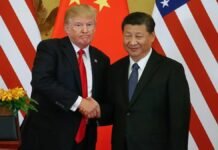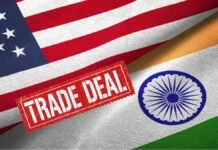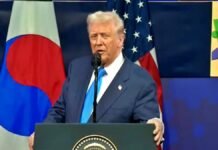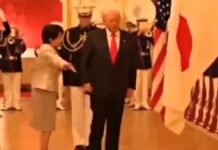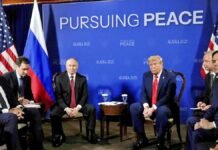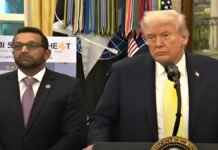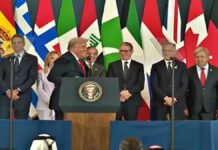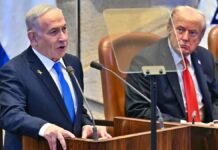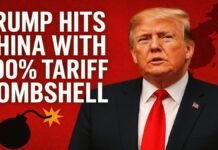
Key Points:
- S&P Global warns that India, South Korea, and Thailand are among the most vulnerable to potential U.S. trade tariffs under President Donald Trump’s administration.
- The U.S. has already implemented a 10% tariff on Chinese imports and a 25% tariff on steel and aluminum, with plans for further reciprocal tariffs targeting trade partners.
- India’s economy may face a GDP impact of 0.1% to 0.6% due to increased tariffs, according to Goldman Sachs.
- Trump has criticized India’s relatively high average tariff rates (17%) compared to the U.S.’s 3.3%, signaling possible trade retaliation.
- Bilateral negotiations between India and the U.S. aim to double trade to $500 billion by 2030, but uncertainty looms over the impact of tariffs.
New Delhi: The Asia-Pacific region is on edge as U.S. President Donald Trump renews his push for reciprocal tariffs on trade partners, including India, South Korea, and Thailand. A report by S&P Global Ratings highlights that these economies are among the most vulnerable to potential trade retaliation due to their significant economic exposure to the U.S.
The Trump administration has already imposed additional tariffs on imports from China and metals like steel and aluminum, signaling its intent to level trade imbalances with other nations. While countries like Vietnam and Taiwan are also at risk, S&P notes that domestically driven economies like India and Japan may experience slightly less severe impacts.
India’s Vulnerability: High Tariffs Under Scrutiny
India faces heightened scrutiny due to its relatively high tariff rates on U.S. goods:
- India’s Average Tariff Rate: 17% on U.S. imports.
- U.S. Average Tariff Rate: 3.3% on Indian imports.
President Trump has repeatedly criticized this disparity, calling it “unfair” and vowing to impose reciprocal tariffs that match what U.S. products face in India. Key Indian exports such as textiles, gems and jewelry, pharmaceuticals, autos, and food products could be hit hardest by these measures.
Goldman Sachs estimates that India’s GDP could take a hit of 0.1% to 0.6% if the tariffs are implemented at country or product-specific levels.
Trump’s Reciprocal Tariff Strategy
The Trump administration’s tariff policy aims to equalize trade terms with partner nations:
- Reciprocal Tariffs: Matching the tariff rates imposed by trading partners on U.S. goods.
- Targeted Sectors: Steel, aluminum, textiles, electronics, and agricultural products are likely focus areas.
- Bilateral Negotiations: Trump has indicated willingness to negotiate agreements with countries like India but insists on “fair” terms.
During a recent press conference, Trump stated: “Whatever they charge us, we’ll charge them back equally it’s fair.”
India-U.S. Trade Relations: A Balancing Act
India and the U.S. have been working toward enhancing their bilateral trade relationship:
- Current Trade Volume: $190 billion in goods and services (2024).
- Target: $500 billion by 2030.
- Both nations are negotiating a bilateral trade agreement (BTA) aimed at addressing key issues like market access for agricultural goods and industrial products.
However, Trump’s aggressive tariff stance adds uncertainty to these talks. While India has reduced tariffs on certain U.S. goods like bourbon whiskey and motorcycles in recent years, further concessions may be required to ease tensions.
Impact on Asia-Pacific Economies
S&P Global highlights that economies heavily reliant on U.S. demand such as South Korea, Thailand, Vietnam, and Taiwan—are at greatest risk of economic disruption:
- These nations have higher economic exposure due to their dependence on exports to the U.S.
- Retaliatory tariffs could lead to reduced exports, slower GDP growth, and strained bilateral relations.
India and Japan are somewhat insulated due to their domestically driven economies but remain exposed due to specific product categories like textiles and electronics.
Uncertainty Looms Over Trade Talks
S&P notes that outcomes depend heavily on bilateral negotiations:
- The Trump administration has significant leeway in imposing tariffs.
- The level of detail in comparing tariff rates whether broad or product-specific will influence the final impact.
India has proposed a “zero-for-zero” strategy aimed at eliminating tariffs on 90% of industrial goods traded between the two nations while protecting its agricultural sector from concessions.
Global Implications of Trump’s Trade Policy
Trump’s tariff strategy extends beyond Asia-Pacific:
- The European Union has warned of retaliatory measures if targeted by similar policies.
- China has already imposed counter-tariffs on U.S. goods following earlier rounds of duties.
- Canada and Mexico have faced increased scrutiny despite existing trade agreements under USMCA (United States-Mexico-Canada Agreement).
Experts warn that escalating trade tensions could disrupt global supply chains and slow economic recovery post-pandemic.
Conclusion: A Delicate Balancing Act for India
As one of the most vulnerable economies identified by S&P Global Ratings, India faces significant challenges under Trump’s reciprocal tariff plan. While ongoing negotiations offer hope for mitigating some impacts, the uncertainty surrounding these measures poses risks for key export sectors and overall economic growth.
India must carefully navigate this complex landscape by balancing concessions with strategic protections for its domestic industries while leveraging its growing importance as a global trading partner. For now, all eyes remain on how these negotiations unfold in the coming months.






